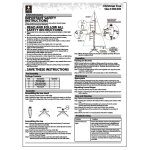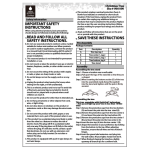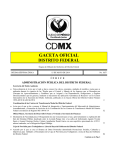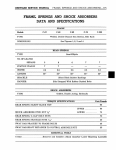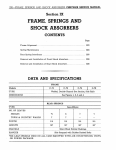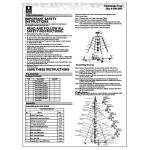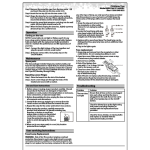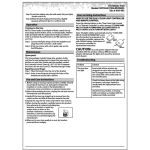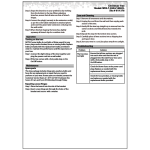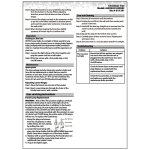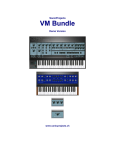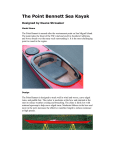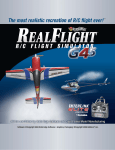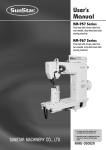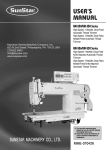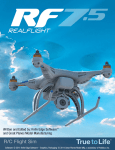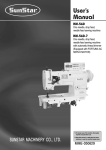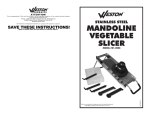Download FRONT WHEEL SUSPENSION
Transcript
Section I FRONT WHEEL SUSPENSION SERVICE BULLETIN REFERENCE NUMBER DATE SUBJECT CHANGES CHRYSLER SERVICE MANUAL 8—FRONT WHEEL SUSPENSION FRONT WHEEL SUSPENSION DATA AND SPECIFICATIONS C-67, C-68 C-69, C-70 C-300 A 7.24" 7.24" 7.24" B. 1.60" 1.60" 1.60" C. 3.12" 3.12" 3.12" A 11.56" *11.68" 11.56" B. 1.68" 1.74" 1.68" C. .90" .90" .90" D, .94" 1.03" .94" E. 3.12" 3.32" 3.12" 54x696 Fig. 1—Upper Control Arm Dimensions 54x697 Fig. 2—Lower Control Arm Dimensions * Specifications for Town and Country Models same as for C-69 and C-70 TIGHTENING REFERENCE Foot-Pounds Threaded Bushing on Lower Control Arm 180 Threaded Bushings on Upper Control Arm 130 Upper and Lower Control Arm to Steering Knuckle Support Pin Nut 100 Upper Shock Absorber Piston Rod Mounting Nut. 35 Lower Shock Absorber Mounting Bracket 60 Foot-Pounds Upper Control Arm Pivot Bars to Frame Crossmember Bolts C-67, C-68 (Except Town & Country) 80 C-69, C-70 (Also C-67 and C-68 Town & Country). 110 Lower Control Arm Pivot Bars to Frame Crossmember Bolts 60 Threaded Bushing in Lower End of Steering Knuckle Support 180 Steering Knuckle Support to Eccentric Bushing Clamp Bolt 40 ESSENTIAL TOOLS C-328 C-369 C-630 C-695 C-736 Remover and Installer—King Pin Bushings Reamer—King Pin Bushing Reamer—King Pin Bushing Line Gauge—Toe-In Tool—Upper Control Arm Seal and Bushing Installing C-829 C-830 C-3413 Wrench—Camber Adjusting Wrench—Camber Adjusting Remover and Installer—Shock Absorber Lower Mounting DD-428 or C-3409.. Gauge—Caster, Camber, and K.P.I. DD-435 Turntable MT-269 Wrench—Camber Adjusting FRONT WHEEL SUSPENSION—9 CHRYSLER SERVICE MANUAL Section I FRONT SUSPENSION REMOVAL DISASSEMBLY, ASSEMBLY AND INSTALLATION 1. DESCRIPTION The front crossmember of the front suspension system on the 1955 cars has been redesigned and strengthened with heavier gauge steel, to increase frame rigidity and resistance to road shock, allowing for an increase in front wheel track, lower center of gravity and improving the front suspension system in general, as shown in Figure 5. Also changed in the new front suspension system assembly is the manner in which the upper control arm pivot bar is attached to the front crossmember (Fig. 3). In the new design, the bar is attached to the crossmember with two bolts instead of four, as formerly. The upper and lower control arm dimensions and the front spring heights are also changed. The front shock absorbers are mounted in rubber mountings within the coil spring on the new frame, as shown in Figure 4, permitting better shock absorber action and improved front end control. 2. LUBRICATING SUSPENSION PARTS Lubrication should never be neglected when assembling suspension parts. Parts, such as rubber seals, seal plugs, bushings and bearings, should be properly located and installed to insure proper lubrication. When assembling coil springs to front crossmember and lower control arms, the coil spring should be centered and located in position before assembly. Pivot bars should also be centered in upper and lower control arms to facilitate adjustment and lubrication. Suitable provisions have been made in the design of suspension parts to allow for proper lubricating of moving parts. The Lubrication Section of this manual should be consulted for correct lubricating procedures. SCREW 55P1014 Fig. 3—Upper Control Arm Pivot Bar Installed Fig. 4—Front Shock Absorber Installation 10—FRONT WHEEL SUSPENSION CHRYSLER SERVICE MANUAL D CO IX. Jl O> FRONT WHEEL SUSPENSION—11 CHRYSLER SERVICE MANUAL •NUT BUSHING •O WASHER $*m SCREW FITTING BUSHING PLUG BEARING LOCK PIN LOCKWASHER FITTING BUSHING SHOCK ABSORBER MOUNTING LOCKWASHER55x4 Fig. 6—Front Wheel Suspension (Exploded View) 12—FRONT WHEEL SUSPENSION CHRYSLER SERVICE MANUAL SERVICE PROCEDURES 3. REMOVAL AND DISASSEMBLY OF UPPER CONTROL ARM (Refer to Fig. 6) It is recommended in the event of damage to the upper or lower control arm, or pivot bars, that a complete upper or lower control arm assembly be installed. A new support arm pivot bar or bushing can be installed, however, if necessary. Basically, the upper control arm remains the same as those used in previous models (Figs. 1,2); however, it is approximately *4 inch wider and is mounted to the frame with two bolts instead of four. Due to these changes, the method of centering the pivot bar is somewhat different in that we can no longer use Tool C-608 for locating the center. It can be used to maintain the set dimension of the upper control arm when new pivot bar bushings are installed. 4. REMOVAL OF UPPER CONTROL ARM (See Fig. 7) (1) Raise the hood and remove dirt or grease from around the shock absorber upper mounting area. (2) Raise car by placing a jack or support under the lower control arm. (3) Remove front wheel and tire assembly. (4) Loosen locking screw and remove upper control arm to knuckle support pin. (5) Remove pivot arm attaching bolts and remove upper control arm. (6) Clean parts thoroughly in a suitable solvent and blow dry with compressed air. (7) Pivot bar, bushings, pin, seal and threaded section of control arm must be thoroughly inspected for wear. Replace parts as necessary. NOTE It is recommended in the event of damage to the upper or lower control arm or the replacement of a steering knuckle support arm, that the caster and camber be checked and brought up to specified limits listed in Data and Specifications. 5. ASSEMBLY OF UPPER CONTROL ARM The upper control arm pivot bar bushings are of the self-threading type. When installing a new upper control arm, use new pivot bar bushings. To assemble the upper control arm, pivot and bushings properly, use special Tool C-608 to maintain the proper spread dimension of the control arm which will also assist in relieving thread tension after the bushings have been started. (1) Center the pivot bar bushing with dust seals installed in the control arm and install Tool C-608 on the pivot bar. (2) Expand the two jaws of the tool by tightening the expander wedge screw until the jaws of the tool are just snug against the inside of the control arm. Do not bring the screw down more than is necessary to place the jaws firmly against the control arm to maintain a fixed dimension of 714 inches at the outside of the "horns" of the control arm (see dimension "A", Fig. 1) when new pivot bar, bushings, etc. are installed. CAUTION To avoid tool interference with bushings make sure jaivs of tool are seated against inside face of control arm and not against the arm flange. (3) Clamp tool and control arm assembly in vise. Center pivot bar. Lubricate bushings with suitable lubricant. (4) Start bushings on both ends of the pivot bar. Thread the bushings into each side of the control arm until the shoulders of the bushings contact the surface of the control arm. Tighten to 130 foot-pounds torque. (5) Remove the tool and check the operation of the pivot bar for free movement (only a moderate grip should be required to turn the pivot bar). CAUTION The pivot bar may be rotated one turn in either direction to obtain correct centering position. FRONT WHEEL SUSPENSION—13 CHRYSLER SERVICE MANUAL NECESSARY CLEARANCE BUSHING N O CLEARANCE ON WORKING SIDE OF PIN 55x75\ Fig. 7—Removing Upper Control Arm IN BUSHING- "V" THREAD DESIGN PREVENTS END PLAY OF PIN WHEN UNDER NORMAL LOAD Fig. 9—Diagram of Threaded Bushing 6. INSTALLING UPPER CONTROL ARM, PIN, BUSHING, AND DUST SEAL (Refer to Fig. 8) (1) Install a new eccentric bushing in the steering knuckle support and place one seal on the bushing at the hexagonal end of the bushing, and the other seal on round boss of the support arm bushing. (2) With Tool C-736, depress the outer edge or lip of the seal, as shown in Figure 8. Slide the control arm and seal onto the steering knuckle support unit until the seal fits properly over the bushing and the pin hole is in proper alignment with bushing and control arm. (3) Remove tool and install the control arm SEAL AND BUSHING INSTALLING TOOL STEERING KNUCKLE SUPPORT pin washer and nut. Position upper control arm pivot on frame. (4) Use a drift to line up pivot bar holes with the frame crossmember holes. Install the attaching bolts and tighten securely to torque specifications. (5) Install front wheels and tire assembly. Inspect or replace damaged greasing fittings. (6) Lower car, remove jack, check front wheel caster and camber. Tighten control arm locking pin and support arm screw to torque specifications. 7. REMOVAL OF LOWER CONTROL ARM AND FRONT SPRING (1) To remove the lower control arm assembly and front spring, remove the front shock absorber. (2) Place a jack or support under the lower control arm to be removed, raise car and remove wheel and tire assembly. (3) Place a support under frame near the upsweep at the front of frame. Support the lower control arm and front spring and remove the control arm and knuckle support pin, lock nut and washer and remove pin. (4) Raise front end of car slightly to relieve pressure on front spring. Fig. 8—Installing Upper Control Arm Pin Bushing Dust Seal (5) Remove front sway-bar from attaching bolts. When pressure is off front spring, 14—FRONT WHEEL SUSPENSION CHRYSLER SERVICE MANUAL BOLT • CUSHION RETAINER CUSHION LOCKWASHER \ NUT SWAY ELIMINATOR SHAFT ASSEMBLY CUSHION RETAINER BOLT 'P""V -cf KJ 49x901 A Fig. 10—Sway Bar (Exploded View) remove jack or support which was placed under control arm, swing arm down and remove front spring. The control arm can then be removed by removing frame to support bar attaching bolts. 8. SWAY ELIMINATOR The sway eliminator, as shown in Figure 10, requires no adjusting other than periodical tightening of fastening bolts. The rubber-cored bushings must not be lubricated or allowed to come in contact with grease or oil. 9. INSTALLATION OF LOWER CONTROL ARM When replacing the lower control arm assembly, always use new pivot bar bushings and dust seals. The lower control arm pivot bar mounting bolt locations have been changed. For this reason the method of centering the lower pivot bar has been changed. Due to the location of these mounting holes, Tool C-594 cannot be used for centering the lower pivot bar, but can only be used to maintain the set dimension of the con- trol arm. (See Fig. 2 for dimensions when installing a new pivot bar.) To replace pivot bar proceed as follows: (1) Install dust seals on pivot bar and position pivot bar in the control arm. Assemble Tool C-594 to the pivot bar. (2) Install dust seals on pivot bar and clamp lower control arm in vise, with steering knuckle support down on bench. Center pivot bar in control arm, lubricate bushings with a suitable lubricant and start bushing evenly on both ends of pivot bar. (3) Remove locating studs from Tool C-594 and place tool in position on pivot bar (open ends of tool down) on bench. Making sure tool remains in place, thread the bushing (one to your right) into control arm until the shoulder of the bushing contacts machined surface of control arm. Tighten to 180 foot-pounds torque. (4) Remove tool from assembly and reverse position of assembly in vise (top of spring seat up on bench). Re-position Tool C-594 CHRYSLER SERVICE MANUAL on pivot bar and thread remaining bushing into control arm using same torque. Remove tool and assembly from vise and check pivot bar for free movement. NOTE Pivot bar may be rotated one turn in either direction to obtain correct centering position. (5) Place the front spring on end in the lower control arm spring seat (flat end up). Lay the upper silencer on top of the spring, and install lower silencer (if so equipped). Install spring and upper silencer in the frame crossmember, turn the spring until it indexes with the lower spring seat and bring lower control arm up to hold it in position. NOTE Look up through the spring, using a bright light, to see if the upper end of the spring is positioned FRONT WHEEL SUSPENSION—15 correctly in front crossmember. Also determine (by feel) if the lower end of the spring is in position. (6) Install jack under the spring seat and jack up the lower control arm until the pivot bar attaching bolts can be installed, then tighten bolts securely. (7) Install the front shock absorber, as described in Shock Absorber Section of this manual. (8) Install sway-bar. (9) Install wheel and tire assembly. NOTE It is recommended in the event of damage to the upper or lower control arm or the replacement of a steering knuckle support arm, that the caster and camber be checked and brought up to specified limits listed in Specifications. SERVICE DIAGNOSIS 10. FRONT END NOISY Possible Causes: a. Improper lubrication b. Looseness in front suspension c. Front shock absorber noisy d. Sway eliminator noisy Remedies: a. Lubricate car. b. A certain amount of looseness is designed into the threaded bushings of the front suspension linkage to prevent binding of the joints under deflection. Unless they cause noise or unstable steering, these parts should not be replaced. Proper lubrication is essential, however. It should be remembered that threaded bushings require more clearance than a smooth pin and bushing type joint; actually, only the "knifeedge" of the threaded pin operates in the "V" shaped thread cut in the bushing, as shown in Figure 9. With the weight of the car on the bushings, the knife-edge bears against the "V" until there is sufficient wear to permit endwise movement of the threaded pin in the bushing. This condition will cause no harmful effect except an increase in noise on rough roads. Always recheck front wheel alignment after repairs are made. c. The rubber bushings on which the shock absorbers are mounted to the anchor studs may be worn and noisy, in which case, it is necessary to replace only the bushings. Shock absorbers which have been found to be noisy should be replaced with new ones. The shock absorbers are of the "spun-over" type and are not serviceable. d. The sway eliminator shaft requires no adjusting other than periodic tightening of the fastening bolts. The rubber bushings on the springs, shock absorbers and sway eliminator shaft must not be lubricated or allowed to come in contact with any form of mineral oil. Mineral base oils will cause rapid deterioration of natural rubber.









